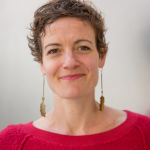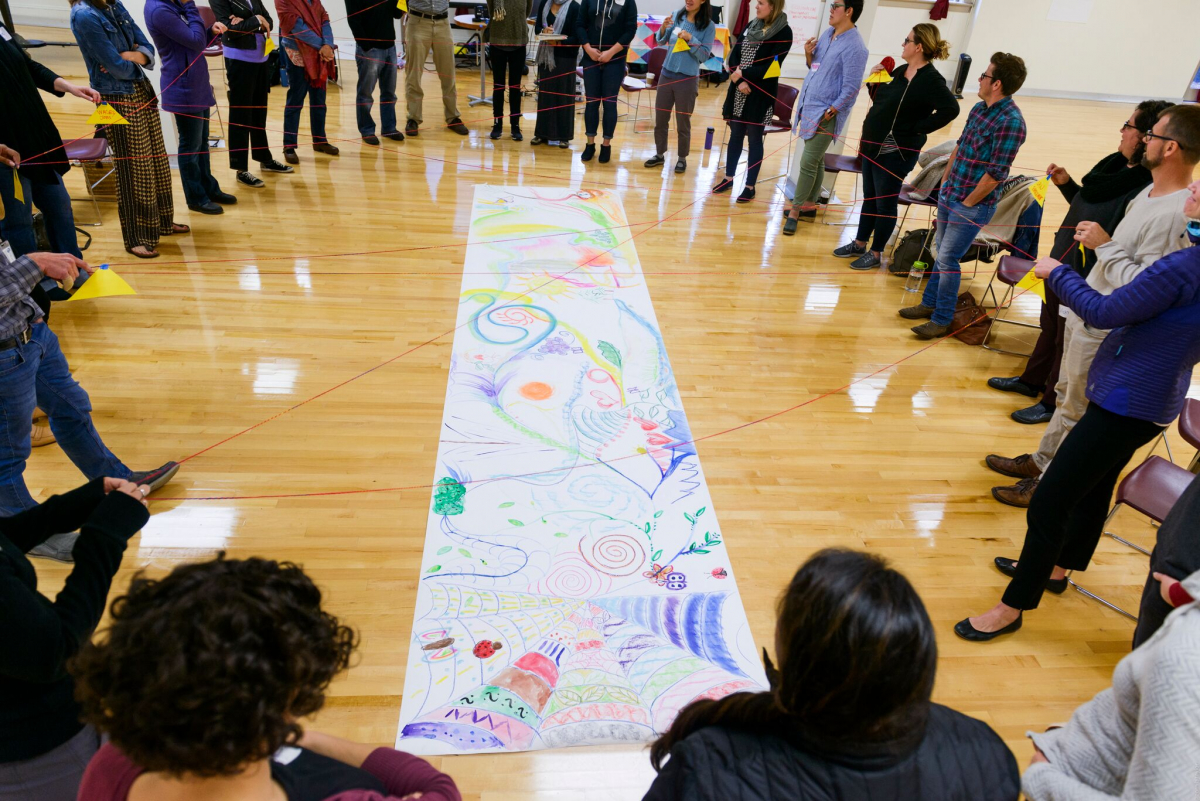Artists Transforming Local Government: Creative Strategies Toward Racial Justice
Posted by Dec 07, 2018

Ms. Diana Falchuk
This post is part of our Inside Artist-Municipal Partnerships blog salon.
I’m writing this on the plane back to Seattle from Detroit, where I’ve just spent three days at Facing Race, Race Forward’s national racial justice conference that happens every two years. I attended Facing Race as a member of the City of Seattle Race and Social Justice Initiative (RSJI) Team that’s based at the Office for Civil Rights, where I work in a shared position with the Office of Arts & Culture (ARTS). Artists, cultural organizers, and truth tellers of all kinds—the heartbeat and muscle of the Movement for Racial Justice—spoke throughout the conference, from the Government Alliance on Race and Equity (GARE) Pre-Conference, which I helped to program, to the keynotes, workshops, films, and performances of the main conference. Giant screens wrapped us in the wisdom of departed Detroit-based racial justice leader Grace Lee Boggs: “Now is the time to grow our souls.” The visionary spirit and work of Detroit’s communities of color anchored us in possibility for justice.
The message at Facing Race was clear: Arts, culture, and government have crucial roles to play in the Movement.
A few years ago, the RSJI Team started looking more closely at how the individualist, perfectionist, paternalistic, and compartmentalizing culture of white supremacy within ourselves and across the institution got in the way of the progress toward racial equity that we were making with trainings, policy tools, and interdepartmental organizing structures. We began to develop a strategy to shift that culture. We adopted the People’s Institute for Survival and Beyond Anti-Racist Principles as our guideposts. We developed trainings to begin to understand and heal from the dehumanizing impacts of internalized racial inferiority and superiority. And we began working to de-center ego and lift up spirit, collective action and the belief that no one is disposable. We started getting real about practicing grace for ourselves and for each other.
Cultivating creativity in our work has become a central piece of this strategy. We expanded the longtime partnership between ARTS and Civil Rights: ARTS began to fully fund my position on the RSJI Team and to invest in the Creative Strategies Initiative. The initiative is a new body of work that supports artist-led policy development and community engagement, arts-integrated trainings and workshops, and spirit-based practices within government and in our work with community.
Among our first projects, we have:
- an artist-in-residence working with the City’s Environmental Justice Committee and local Indigenous leaders to create a cookbook of Indigenous recipes and models for policy on foraging;
- a set of poets working with ethnic communities in multiple languages to develop a strategy for development in our Chinatown International District;
- a team of artists facilitating arts- and mindfulness-integrated curriculum in a five-month racial equity learning cohort for environmental policy influencers from historically white led organizations; and
- a writer/director developing an original performance based on stories of racism from the City’s workforce. A video of the performance will be the first component in a multi-part training on the practice of racial equity for human resources advisers, managers, and supervisors.
Through a partnership with PYE Global, we also are providing creative facilitation training for City staff leading racial equity work and for the cadre of community members who are contracted to conduct much of the City’s community engagement.

The values and ways of being that we elevate through this culture-shift strategy serve as antidotes to the violence of white, Christian, heteropatriarchal nationalism we’re experiencing in our country today. With attacks on transgender and gender non-conforming people, Black and brown people, Jews and Muslims, victims of sexual assault, and humans seeking refuge and asylum, there are days when it seems like no one isn’t a direct target of systemic harms. As a white, bisexual mother, Jew, artist, graduate degree holder, member of the middle class, survivor of sexual assault, and daughter of a Venezuelan immigrant, I experience these realities in multiple dimensions. My artistic practice and my Jewish cultural and spiritual practices are life-giving forces for contemplation and connection to my communities and my humanity. They help me to be whole and bold in the identities that cause me to experience oppression and to interrupt the ways my social privileges, especially my race, make me complicit in the oppression of others. Art, culture, and spirituality allow me to help write the story in which we all get to be free.
At Facing Race artists, advocates, and organizers of all kinds reminded us that white supremacy and white nationalism are cultural and political narratives generating realities that we must understand; that we need to be accountable to the leadership of those who are most impacted by the injustices of white supremacy—people of color—to listen to and get behind their truths; that culture is power and that we must use art and humor to tell our own stories, ones of justice that wage love; and that local government has a role to play in our overall culture shift by transforming itself with the guidance of artists and grounding in creativity.





